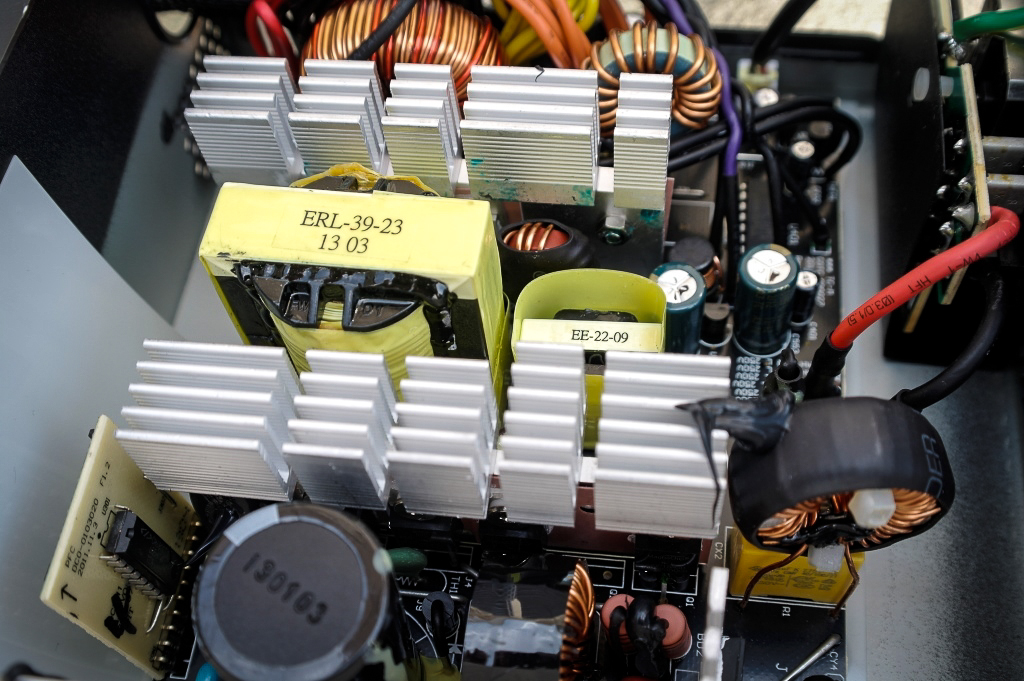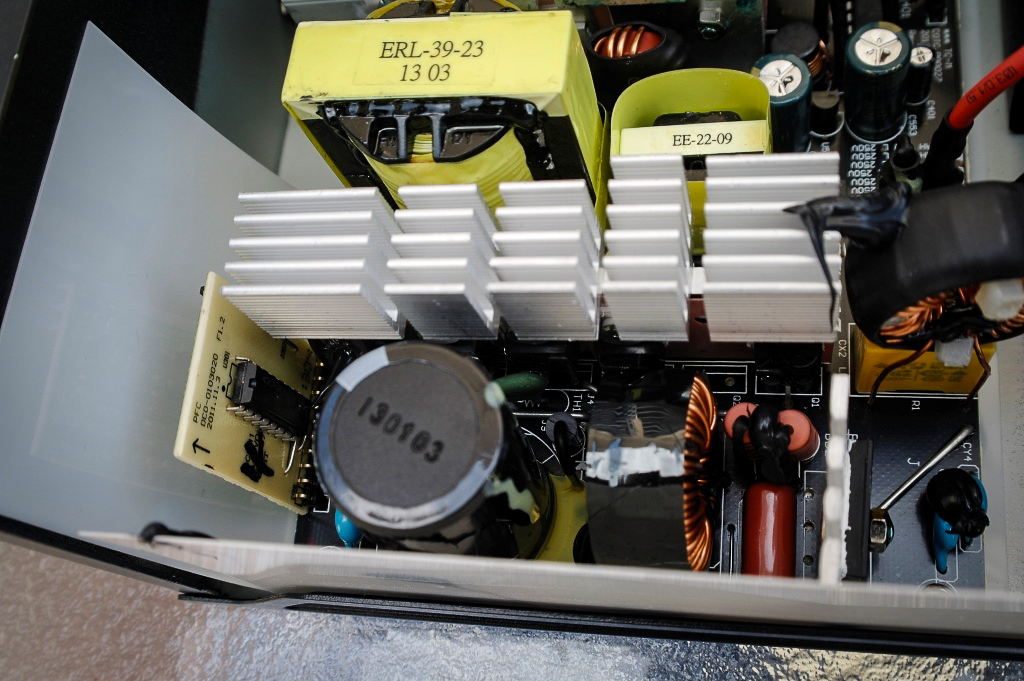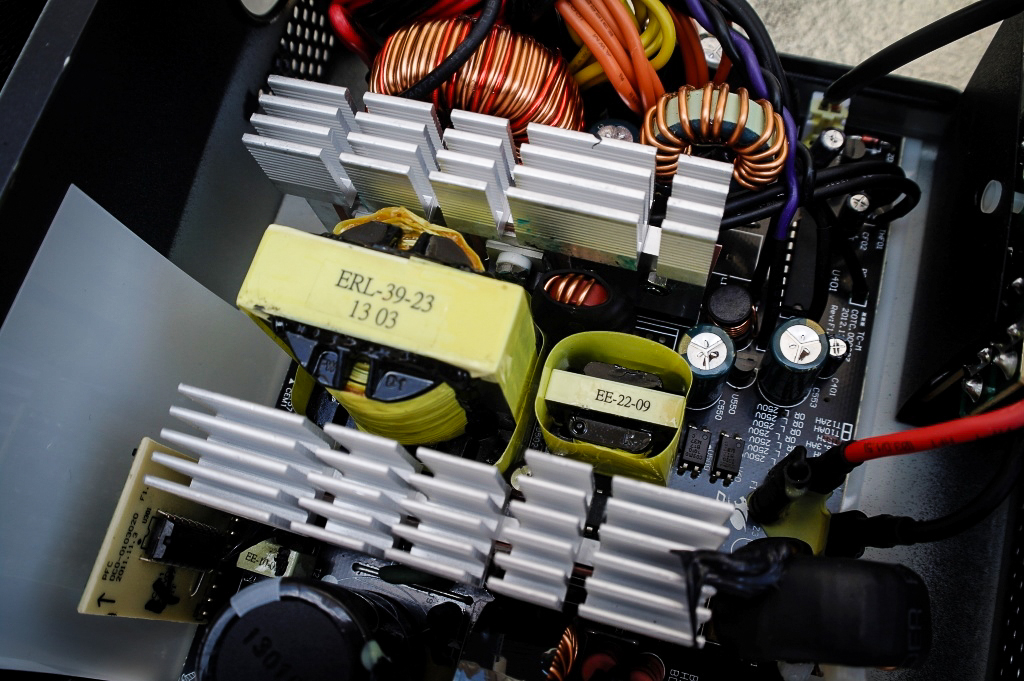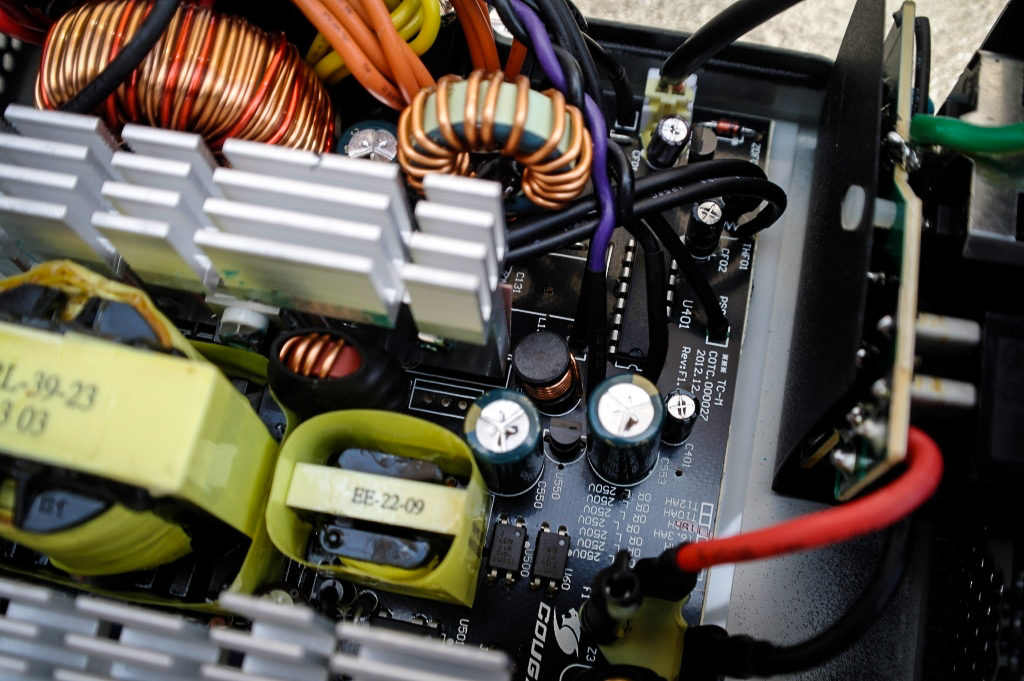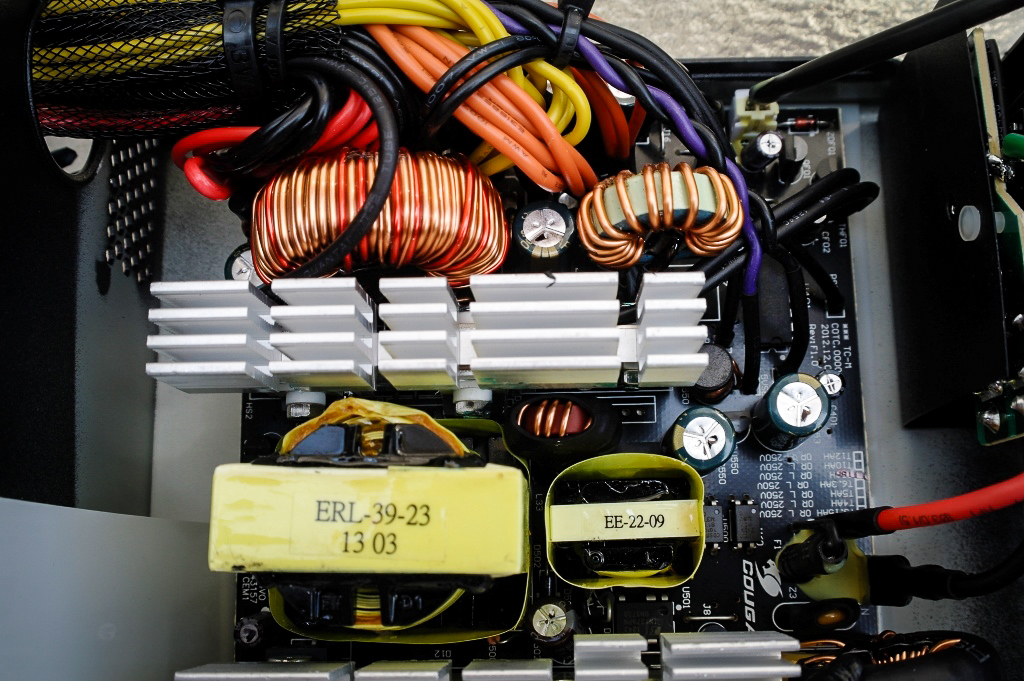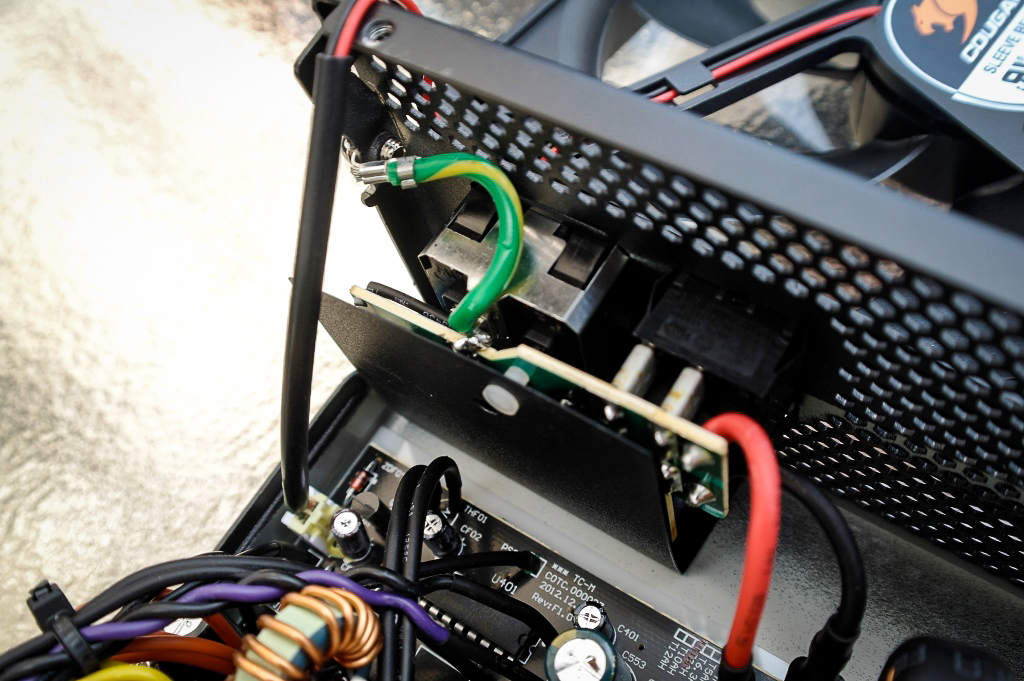ALL AROUND THE INTERIOR
Taking a closer look at the interior of the PSU, it is apparent that Cougar takes its time in crafting, as all components are securely fastened. The PCB work is brilliant, the epoxy binds all large capacitors, and locking glue is applied to all push-in connectors to ensure the connectors do not loosen:

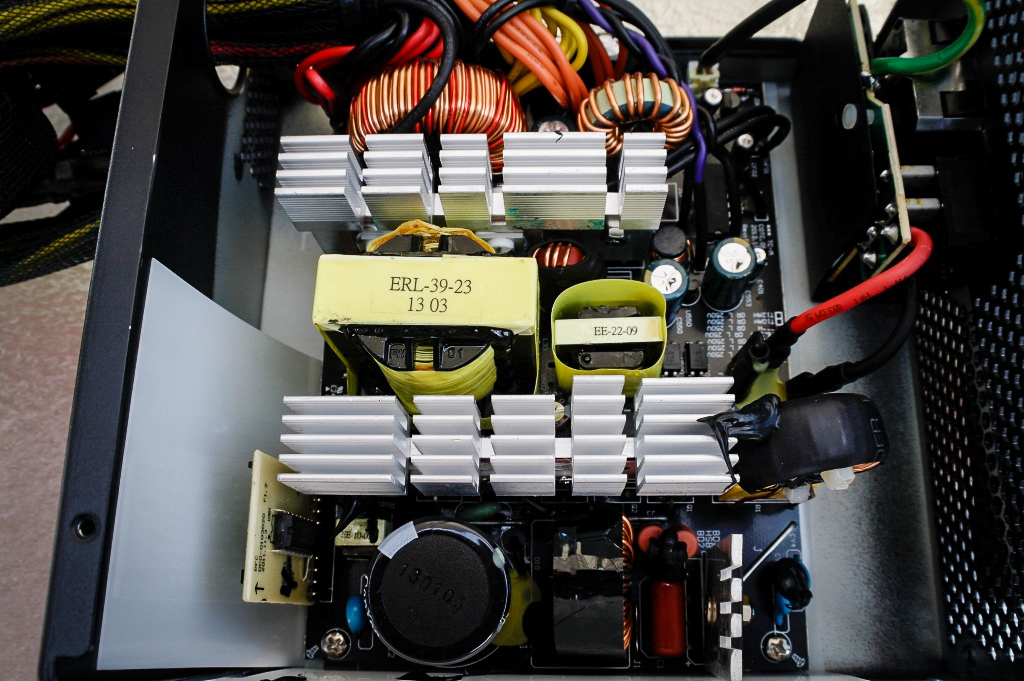
Dominating the PSU are two large heatsinks that separate the transformers from the primary and secondary power supply regions. The heatsinks are actually quite thin and small, thus allowing for quicker heat dispersion as the fan is found directly above to quickly move and dissipate heat.
At the primary stage of the power supply we notice the output of the active PFC circuit is filtered by only one CapXon 270uF 400V radial snap-in electrolytic capacitor, which is Chinese made and tested for conditions up to only 85⁰C – hence resulting in a lower maximal operating temperature of only 85⁰C, compared to the Japanese standard of 105⁰C.
The active PFC controller and switching transistors can also be found on the opposite side of the primary stage, and the switching transistors can further be found on the opposite side of the primary stage heatsink.
Looking further at the transformer stage of the power supply boarding the primary and secondary stages, it can quickly be noticed that two different transformers are utilized. The largest is the main transformer producing the +12V needed to power the computers main components and the smaller transformer produces the +5V (standby power) and +3.3V outputs which are connected to the single main +12V rail for increased efficiency. We would have preferred to see two small transformers for dedicated +3.3V and +5V outputs to better balance the tri-rail load.
The secondary stage of the power supply can be seen to possess a plethora of CapXon and Teapo (non-japanese made) electrolytic capacitors to further filter the current prior to it passing into the computers components, as well as the required +12V, 5V and 3.3V rectifiers found on the secondary heatsink. These capacitors are unfortunately second-grade and decent quality at best.
The wiring found in the secondary stage of the power supply is shielded appropriately and zip-tied in tight bundles to further prevent wires from burning. This is nice to see as lower cost builds tend to leave the wires exposed, presenting the potential threat of fires and/or burning wires. The braiding also reaches a fair ways inside the frame in case the user needs a little extra pull.
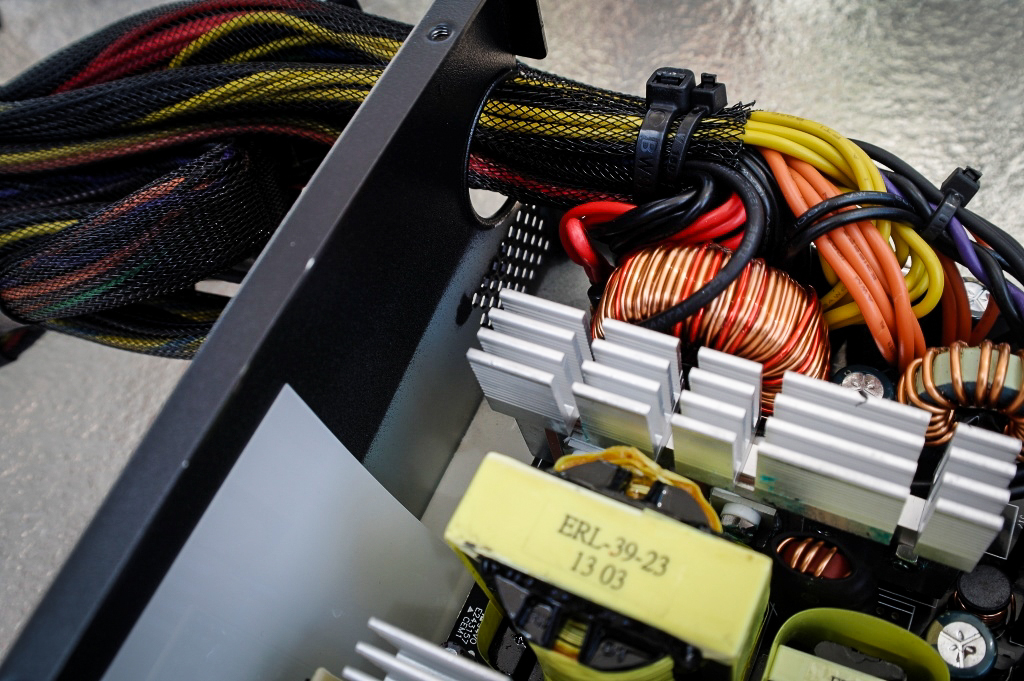
 Technology X Tomorrow's Technology Today!
Technology X Tomorrow's Technology Today!

